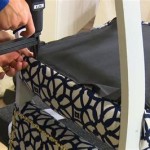How to Repair Leather Sofa Stitching: A Comprehensive Guide
Leather sofas are known for their elegance and durability, but even the finest leather can experience wear and tear over time. One common issue is torn stitching, which can compromise the sofa's aesthetic appeal and structural integrity. If you find yourself with a torn leather sofa stitch, don't despair. With the right tools and techniques, you can repair it yourself and restore your sofa to its former glory.
Step 1: Gather Materials
Before you begin, gather the following materials:
- Leather repair kit or leather thread
- Leather needle or upholstery needle
- Leather glue or fabric adhesive
- Dental floss or strong thread
- Tweezers
- Scissors
- Rubbing alcohol
- Leather filler or putty (optional)
- Toothpick or awl (optional)
Step 2: Clean and Prepare the Area
Clean the area around the torn stitching with rubbing alcohol to remove any dirt or debris. Use tweezers to carefully remove any loose threads or fraying leather. Trim any ragged edges of the tear using scissors.
Step 3: Apply Leather Glue
If the tear is small or the stitching has come loose, apply a small amount of leather glue to the edges of the tear. Press the edges together and hold for a few minutes to allow the glue to set.
Step 4: Restitch the Leather
For larger tears or complete stitching failures, restitching is necessary. Thread a leather needle or upholstery needle with the leather thread. Use a dental floss or strong thread to hold the torn edges together while you stitch. Start by making a small stitch at the end of the tear. Then, continue stitching along the original stitching line, taking even and consistent stitches.
Step 5: Trim Excess Thread
Once the stitching is complete, trim any excess thread close to the leather.
Step 6: Conceal the Repair (Optional)
If desired, you can conceal the repair by filling in any gaps or imperfections with leather filler or putty. Use a toothpick or awl to apply the filler and smooth it out. Allow the filler to dry completely.
Step 7: Conditioning and Protection
After the repair is complete, it's crucial to condition and protect your leather sofa. Apply a leather conditioner to the entire sofa to nourish and restore its suppleness. You can also use a leather protectant to create a barrier against stains and scratches.
Tips for Successful Repairs
- Use a needle that is specifically designed for leather, as it has a sharp point and a larger eye to accommodate the thicker thread.
- Match the thread color to the original stitching as closely as possible.
- Take your time and make even, consistent stitches.
- Don't overtighten the stitches, as this can damage the leather.
- If you're not confident in your stitching skills, consider consulting a professional upholstery repairer.
Conclusion
Repairing leather sofa stitching can be a rewarding task that restores the beauty and functionality of your furniture. By following these steps, you can achieve a professional-looking repair that will prolong the life of your leather sofa and enhance the comfort and style of your home.

Sofa Repairs With Leather Stitching Wefixanysofa Com

Furniture How Can I Repair A Damaged Seam On Leather Sofa Home Improvement Stack Exchange

Sofa Repairs With Leather Stitching Wefixanysofa Com

Repairing A Ripped Seam In Leather Couch Hometalk

Sofa Repairs With Leather Stitching Wefixanysofa Com

Repair Leather Sofa Stitching 3 Steps With Pictures Instructables

How To Hand Sew A Broken Seam On Leather Recliner

Sofa Repairs With Leather Stitching Wefixanysofa Com

How To Repair A Broken Seam On Leather Sofa

Fix A Rip In Your Leather Sofa Design Inkarnation Art And The Human Condition
Related Posts








